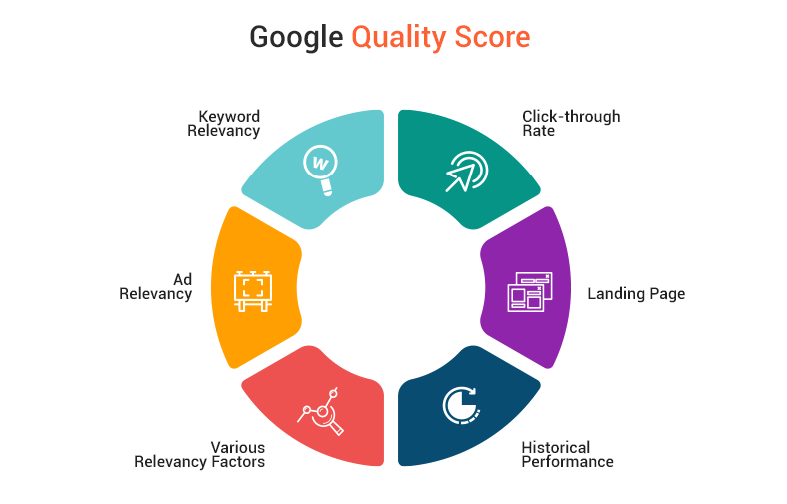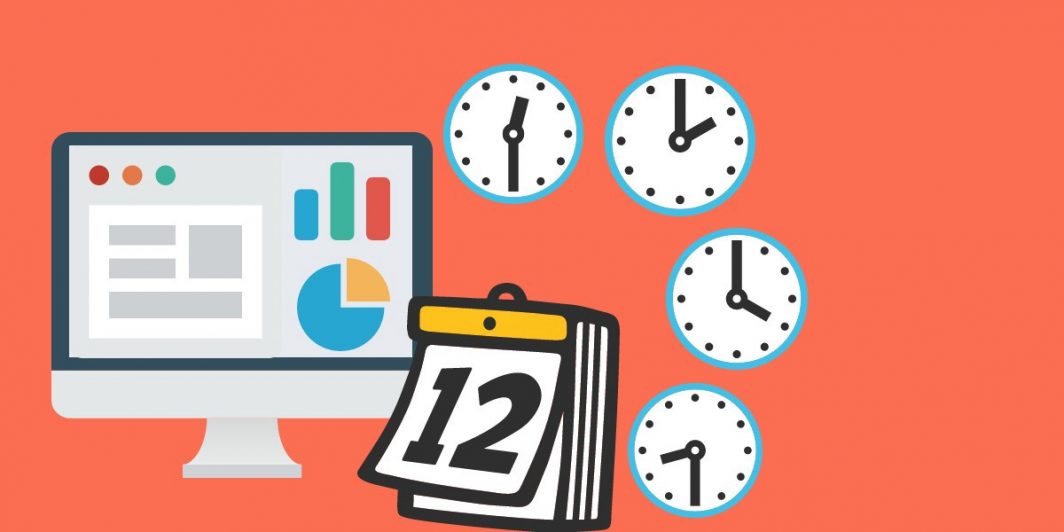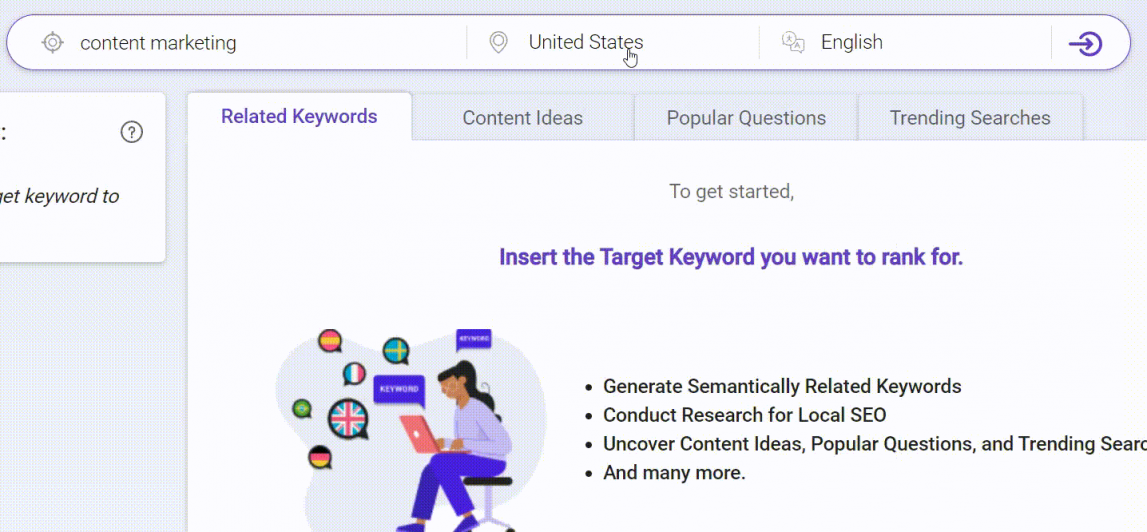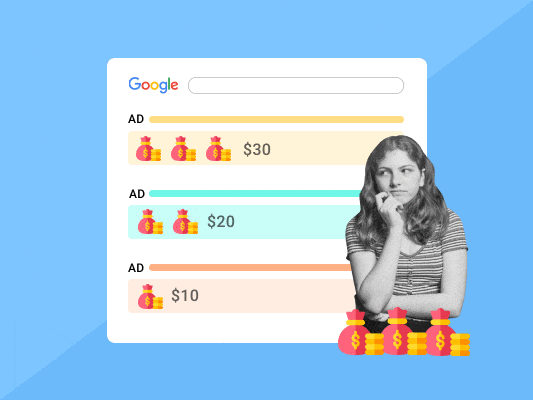Having a low CPC is what most content marketers seek to gain from their ad campaigns. However, CPC may vary across industries. With that, here are 9 strategies to help lower CPC for ad campaigns.
Having a successful Google CPC ad campaign usually means you’ve got a high enough CTR and low CPC, right?
Well, above are two of the most sought-after metrics content marketers are always looking to improve. Like with all things business, you’re always looking to gain the best quality leads while using the least resources.
Well, this is easier said than done.
Fortunately, there are several factors you can use to bring down CPC on Google Ads.
But still, you must be strategic. Overdo the process, and you might end up impairing your entire CPC campaign.
Do too little, and you may not experience the full growth and potential you’re looking for.
But enough of the scary stuff.
Our team compiled a comprehensive guide on how to lower CPC costs. Here’s what you need to know!
How To Lower CPC
Depending on your industry/niche, products, and targeted location, achieving low CPC may vary. That’s why you would do your campaign justice by mastering and implementing the steps mentioned below.
Here are 9 of the most effective strategies to help with CPC costs.
1. Use Long-Tail Keywords

When it comes to increasing CPC ad views and decreasing CPC, you cannot afford to neglect long-tail keywords.
Long-tail keywords generate over 80% of organic traffic. And smart marketers know to take this seriously.
Some brands might not find this strategy worthwhile to invest their time and money, especially ones with high brand recognition and huge budgets. These brands can still rank in search engines by using head keywords.
However, if you’re just starting out in the online marketing space, going after high volume keywords can be tantamount to marketing suicide. What with all the competition and brands with huge budgets. It can be just too much competition to handle.
In the same vein, not many brands utilize long-tail keywords to leverage Google Ads to drive leads, traffic, and sales, making long-tail a more feasible option.
BiQ Keyword Intelligence is an excellent tool for finding a mixture of short- and long-tail keywords for your ad campaign.
While on the BiQ Cloud platform, click on “Advanced Filter” to filter only the long-tail keywords. The Advanced Filter feature also allows you to choose your preferred long-tail keywords and their relatedness to your main keywords.
BiQ Keyword Intelligence also sorts your keywords based on their value. The higher-valued long-tail keywords that can bring more traffic to your site will be displayed at the top of the list, making it easier to determine the keywords that prove to be a hit to your readers.
2. Target Keywords That Have Low Bids
As you target keywords, look for those with comparatively low bids since they are bound to have low CPC. The cost per click of keywords depends on how competitive your niche/industry is. Therefore, the keywords with low bids will relatively have lower CPC.
Your keyword bids directly relate to your ad position, making it a crucial metric to obtain low CPC costs. Experimenting with several keyword bids is an effective strategy to gather data-driven insight into ad positions that work best for maximizing your marketing profits.
You don’t necessarily always have to be on the top spot in the search engines. Some target keywords are extremely expensive and can fetch very high CPC costs.
You can start by lowering your CPC bids by $0.50, then let your ad run for a week or so based on the search volume. During this period, ensure you analyze how this will impact your marketing results.
Content marketing experts advise that you also switch your CPC bidding from automatic to manual. Manual bidding offers you more control over CPC costs.
3. Use Negative Keywords
Using negative keywords is another excellent strategy to lower your CPC costs. Negative keywords prevent irrelevant search queries from triggering your ads, which can lower your CTR significantly.

A healthy CTR is vital since a lower click-through rate can lower your Quality Score, increasing your CPC. And that’s something you don’t want.
Generally, they let your ads show up to searchers who’re genuinely looking for your ad and are showing interest in your products/services. Therefore, you must work on how to avoid all the irrelevant search queries to increase your CTR. Ultimately, this improves your Quality Score and lower CPC.
4. Use Different Keyword Match Types
You probably already have the focus keywords you intend to use in your ad campaign by this stage. You can now tweak your ad marketing costs by changing how closely you intend to match your ads to the search queries.
We refer to this as match type.
Depending on your niche/industry, CPC costs can vary from slight to ridiculously exorbitant. Then again, this depends on your keyword match types.
Fortunately, you can now get rough estimates of different keyword match types in your industry by pausing your campaign, changing your match types, and checking the bidding estimates.
Compare this data against the CPC costs you were running before, and you will know whether your strategy is working or not.
Sometimes, it’s better to experiment with your CPC ads and use real-time tools to determine the differences in costs and conversions between each keyword match type.
You can also create different ad groups, set different match types, and target the same keyword. The secret here is to test your keyword match types and optimize accordingly.
5. Improve Your Quality Score

Quality Score is Google’s rating strategy for determining the relevance of your ads, keywords, and landing page. Quality Score determines your ads’ position in the SERPs, as well as how much you’ll have to pay for each click.
Your CTR will increase significantly after you’ve started creating highly targeted keywords with more relevance to the search queries. Increased CTR will lead to an improved Quality Score, which increases your overall ad rank, thereby lowering your CPC.
According to Google Ads, the more relevant your ads and landing pages are, the likelier you are to improve your Quality Score.
6. Use Ad Scheduling
Another effective feature to help with CPC costs is ad scheduling. It’s often one of the most overlooked PPC advertising strategies content marketers tend to ignore. However, it has a lot of potential, especially when it comes to saving your ad spend.

Scheduling your ads shouldn’t be an issue if you’re already familiar with the time or day you get the best and least response from your prospects. You simply schedule your ads to those specific days or times to boost your CTR.
With this data, you’ll be able to show relevant ads to your customers at the most appropriate periods when they’re most likely to convert. Scheduling ads will further minimize your chances of getting irrelevant clicks, thereby leading to low CPC costs.
Google Ads is one of the best tools with Ad Scheduling features to significantly help save up your ad budget. Google Ads can prevent your ads from displaying at certain hours or days. It’s perhaps one of the most effective strategies for preventing irrelevant ad clicks. Use it to your advantage.
7. Utilize Geo-Targeting

Geo-targeted ads have been around for some time now. They help you focus on advertising, particularly in areas where you’ll find the right audience for your business.
For each Google AdWords campaign, you can set the locations you want your ads to be displayed. Google AdWords has multiple location targeting types you can use. You can target an entire nation, city, town, region, and even areas around specific locations.
Geo-targeting can potentially take your AdWords campaign to greater heights. It’s the most effective tool content marketers use to target specific online users with their PPC campaigns.
However, geo-targeting can only be effective if you have a physical location within the area you’re targeting.
Your ads will only be shown in areas where your potential customers reside. It’s an excellent strategy for increasing your CTR and eventually improving your Quality Score, consequently lowering your cost per click.
Again, BiQ Keyword Intelligence is an excellent tool to help you find untapped local keyword opportunities. When on the website, enter your focus keyword. Next, choose the location and language you want to target.

BiQ’s Keyword Intelligence will show you all the relevant keywords related to your target keywords that the local people in your chosen location are using.
You must also note that while your target keyword recommendations for one location may be 1,000+, you may have less than 100 in another location. That’s simply because different people in different locations have different demands.
Therefore, you want to choose the keywords with high search volumes but lower competition to boost your overall rankings in the SERPs.
BiQ’s Keyword Intelligence simplifies this process for you by sorting the potential keywords based on keyword value.
8. Use Retargeting/Remarketing
Did you know that over 96% of visitors who visit your website for the first time aren’t always ready to purchase your products/services?
However, while this might seem like a number blown out of proportion, it’s actually not as bad as it seems.
While the steps we’ve highlighted above will lower your CPC, utilizing retargeting/remarketing provides the most significant gains.
The best part about ad retargeting is that there are many strategies you can use, including:
- Site retargeting
- Search retargeting
- Social retargeting
- Email retargeting
- CRM retargeting
More on that in the graph below.

So, let’s say someone clicked on your ad but didn’t purchase from you. It doesn’t necessarily mean you did something wrong. The customer might simply not be ready to buy your product/service yet. Perhaps whatever you’re selling isn’t an impulse buy to them.
However, that doesn’t mean you’ve lost them. Don’t give up just yet! You can actually bring them back and possibly entice them to make a purchase.
Retargeting is a very useful tool, especially when most of your website visitors are bouncing off immediately after visiting your landing page. If that’s the case, then you’ll want them to see your ad again, even if it’s one last time.
Then why not cater to these people specifically? Create a specialized ad calling these prospects out directly. Remind them of what they’re missing out on and how your product/service could help solve their pain points. It would help to throw in a discount to make it even more enticing.
Retargeted clients are always 70% more likely to convert, which is a significant figure from the 96% we had earlier.
9. Test Different Rank Positions On Search Engine Results Page
Google ranks ads on its results page by using an auction system to decide each ad’s CPC. It would also be in your best interest if you aimed your ads for different positions to see how they fare.
Try to aim for the 3rd or 4th as positions to see how your ad campaign progresses. Remember, you’ll have to rely on your keywords, landing page, and ad copy to change your ranking position in the SERPs.
Being as Google uses Quality Score and the Max CPC to determine your ad rank, you can start by lowering your CPC.
Your ad rank and Quality Score are also interconnected. Therefore, a rise or decline in your Quality Score leads to a rise or decline in your ad rank, respectively.
So, if you find the CPC for rank position 1 to be higher than that of position 2, go for the lower CPC. It will save you a lot of money in the long run.
Conclusion
Although getting low CPC is crucial to succeeding in your Google Ads and improving other aspects of your campaign, you shouldn’t make it your only end goal.
Ultimately, you should prioritize meeting your potential customers’ needs and improving their user experience while on your website. These two strategies will consequently boost traffic to your website, making your business even more profitable.
That’s to say, you shouldn’t obsess too much with metrics, especially just the one discussed in this post. Learning how to lower CPC is just a piece of the puzzle. Applying the tips mentioned above to your campaign is the best strategy for realizing your desired results.
That said, we would wish you good luck in your future ad campaigns!




